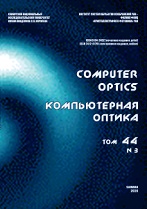|
Эта публикация цитируется в 4 научных статьях (всего в 4 статьях)
ЧИСЛЕННЫЕ МЕТОДЫ И АНАЛИЗ ДАННЫХ
Transformer point net: cost-efficient classification of on-road objects captured by light ranging sensors on low-resolution conditions
J. Pamplonaa, C. Madrigalb, J. Herrera-Ramirezc
a GICEI, Institución Universitaria Pascual Bravo, Calle 73 No. 73a - 226, Medellin, Colombia
b Grupodot S.A.S., Ak. 19, 84-17 Oficina 701, Bogotá, Colombia
c GAEYCC, Instituto Tecnológico Metropolitano, Calle 54a No. 30 - 01, Medellin, Colombia
Аннотация:
The three-dimensional perception applications have been growing since Light Detection and Ranging devices have become more affordable. On those applications, the navigation and collision avoidance systems stand out for their importance in autonomous vehicles, which are drawing an appreciable amount of attention these days. The on-road object classification task on three-dimensional information is a solid base for an autonomous vehicle perception system, where the analysis of the captured information has some factors that make this task challenging. On these applications, objects are represented only on one side, its shapes are highly variable and occlusions are commonly presented. But the highest challenge comes with the low resolution, which leads to a significant performance dropping on classification methods. While most of the classification architectures tend to get bigger to obtain deeper features, we explore the opposite side contributing to the implementation of low-cost mobile platforms that could use low-resolution detection and ranging devices. In this paper, we propose an approach for on-road objects classification on extremely low-resolution conditions. It uses directly three-dimensional point clouds as sequences on a transformer-convolutional architecture that could be useful on embedded devices. Our proposal shows an accuracy that reaches the 89.74% tested on objects represented with only 16 points extracted from the Waymo, Lyft’s level 5 and Kitti datasets. It reaches a real time implementation (22 Hz) in a single core processor of 2.3 Ghz.
Ключевые слова:
LiDAR, point cloud, deep learning, object classification, transformers, low resolution, autonomous vehicles, low specification computing
Поступила в редакцию: 28.06.2021
Принята в печать: 22.11.2021
Образец цитирования:
J. Pamplona, C. Madrigal, J. Herrera-Ramirez, “Transformer point net: cost-efficient classification of on-road objects captured by light ranging sensors on low-resolution conditions”, Компьютерная оптика, 46:2 (2022), 326–334
Образцы ссылок на эту страницу:
https://www.mathnet.ru/rus/co1020 https://www.mathnet.ru/rus/co/v46/i2/p326
|

| Статистика просмотров: |
| Страница аннотации: | 13 | | PDF полного текста: | 7 |
|




 Обратная связь:
Обратная связь: Пользовательское соглашение
Пользовательское соглашение
 Регистрация посетителей портала
Регистрация посетителей портала Логотипы
Логотипы








 Цитирование в формате
Цитирование в формате 
